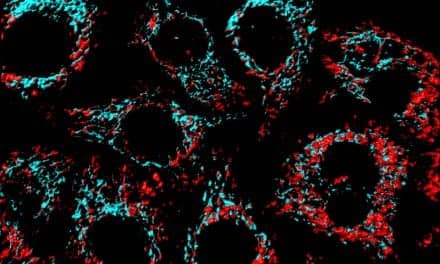The 3rd Annual FOCUS Conference


|
Focus Publications, publishers of FOCUS Journal for Respiratory Care & Sleep Medicine, is the master chef of this conference, and with two successful meetings under its belt, there is no doubt they have raised the bar. Indeed, the most often heard comment from past attendees has been, “This is an incredible conference and a heck of a value. How are they going to top this next year?”
Conference chairman Bob Miglino, RRT, MPS, sets the stage to do just that and with a package that is $100 less than the average fee for national conferences of this type. Two thousand respiratory care practitioners, sleep technologists, nurses, and pulmonary physicians, all of whom can earn continuing education units (CEUs), are expected to converge in Nashville as the word continues to spread via those who have been astounded by the freshness, originality, and the affordability of the previous two FOCUS conferences.
A review of FOCUS’ agenda shows that another superb conference is on tap, and, as we have reported for 2 years now, it appears that affordability for attendees plays as important a role as excellent education does as the driving force of the conference. The registration fee ($225) is an excellent value, especially when considering what is included in the fee. Students pay only $200, and there is even a “significant other” fee of only $150.
“We mix an exceptional academic program with a lot of fun and then we do unprecedented negotiating legwork with the hotels, airlines, and our suppliers to arrive at a fee that takes into consideration the fact that people are not being reimbursed to attend conferences the way they used to be,” Miglino says. “Our speakers are tops in their fields and 16 CEUs are available for four different disciplines. We are particularly proud of our sleep track this year, which features William Dement, MD, Meir Kryger, MD, William Orr, MD, Sharon Keenan, PhD, and Mary Carskadon, PhD. There will also be a special Who Moved My Cheese workshop based on Spencer Johnson’s bestseller. We top off the conference by having not only country music star Naomi Judd (who is a registered nurse) as our keynote speaker, but also by attending the live Grand Ole Opry show,” Miglino adds.
This conference has it all and saves attendees money and time. For more information, visit www.foocus.com or call (800) 661-5690. RT will be there, so drop by booth #425 to say hi.
 Antibiotic Use In Utero Linked to Child Asthma Antibiotic Use In Utero Linked to Child AsthmaExposure to antibiotics in the mother’s womb is associated, in a dose-related manner, with an increased risk of asthma in the child, based on a study of almost 25,000 British children. Tricia M. McKeever, MSC, of the Division of Respiratory Medicine, University of Nottingham, United Kingdom, and three associates published the study’s results in the second issue for September 2002 of the American Thoracic Society’s American Journal of Respiratory and Critical Care Medicine. The researchers concluded that exposures to antibiotics and to infection in utero are potential risk factors in the development of allergic disease. They studied viral and bacterial infections such as those in the gastrointestinal and respiratory tracts, conjunctivitis, otitis media, and Candida. Exposure to such conditions and corresponding antibiotic use was associated with an increased incidence of asthma, eczema, and hay fever in the children. The researchers believe that antibiotics can cross the placenta and enter the fetal circulation. Survey Mandates Bioterrorism Training John Hickner, MD, and Frederick M. Chen, MD, led the research team, and discovered that three quarters of doctors admitted feeling unprepared to recognize bioterrorism-related illnesses in patients. Those surveyed felt more comfortable responding to natural disasters and other public health emergencies. |
HIV Patients Survive Hospital Visits
Patients with human immunodeficiency virus (HIV) admitted into the intensive care unit now have a better chance of survival, according to a study published in the first issue for August 2002 of the American Journal of Respiratory and Critical Care Medicine, the peer-reviewed journal for the American Thoracic Society. Alison Morris, MD, formerly with the Department of Medicine, University of California, San Francisco, with five colleagues, has concluded that the survival to hospital discharge of HIV-infected patients has more than doubled since the beginning of the AIDS epidemic in the early 1980s.
At San Francisco General Hospital, the survival rate was 31% from 1981 to 1985, and currently, it is 71%, up 8% from 1992 to 1995. The improved rate has been significant among patients receiving highly active retroviral therapy (HAART).

Owning a cat protects children against asthma, according to a study published in the first issue for September 2002 of the American Thoracic Society’s American Journal of Respiratory and Critical Care Medicine. Matthew S. Perzanowski, MPH, of the Asthma and Allergic Diseases Center, University of Virginia Health Sciences Center, Charlottesville, with A.E. Platt-Mills, MD, and several Swedish associates, studied more than 3,000 7- and 8-year-old boys and girls in Sweden over 3 years.
The overall effect of “ever asthma” was 4.1%, and of wheezing in the last 12 months, 8.3%. Having a cat at home, though, was shown to provide significant protection against incident cases of “physician-diagnosed asthma.” Children living with a cat made serum immunoglobulin G antibodies to cat allergen without becoming allergic.
Rare Pneumonia Hits NYC Fireman
A 38-year-old New York City firefighter, working 16-hour days at Ground Zero of the World Trade Center attacks, has suffered a rare case of acute eosinophilic pneumonia caused by what doctors attribute to extreme dust exposure as he searched for survivors and body parts. The article was published in the second issue for September 2002 of the American Journal of Respiratory and Critical Care Medicine, the American Thoracic Society’s peer-reviewed journal.
William N. Rom, MD, MPH, of the Division of Pulmonary and Critical Care Medicine, New York University School of Medicine, with eight colleagues, wrote that doctors were able to reverse the course of this rare disease, which is characterized by noninfectious respiratory failure, through the use of oxygen and corticosteroid drugs. The patient’s CT scan revealed patchy ground glass density, thickened bronchial walls, and abnormal accumulation of fluid in the pleura, the delicate membrane covering the lung and interior wall of the chest; fly ash, degraded glass, and asbestos fibers were identified in his lung fluid.



















